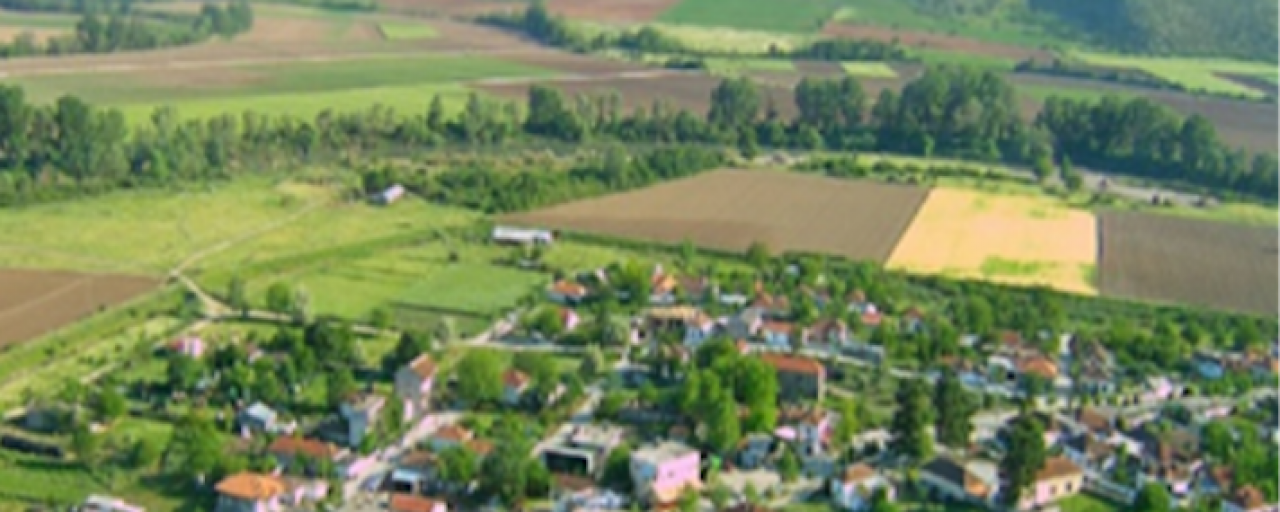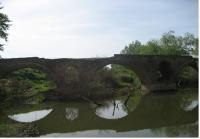
Farkadona, a small municipality in Greece, outlines its plan to capitalise on the existing natural landscape to build mental, physical, and natural health during the Healthy Cities project. With existing experience in public health projects, Farkadona also shares its governance tips for local leaders to get the most out of projects for health.
The Place
Farkadona is a small municipality, located in Central Greece. With a population of 13,396, the municipality’s 18 small cities and villages lie between a fertile, agricultural plain and some low-lying mountains featuring pastures, small forests and several rivers.
The municipality has significant cultural heritage, in the form of its own well-maintained traditions and historic monuments from the ancient cities of the prehistoric, Mycenaean, and byzantine periods. Today the economy is based mainly on modern agriculture and traditional livestock farming, in addition to commerce and food industries.

Strategic Plan
Farkadona’s strategic plan for health aims to harness the rich local landscape to activate human health, natural resources and productive abilities. The overall goal is to combine agriculture, cultural heritage, the environment, skills, and capacity building to ensure sustainable economic, social and urban development and build a healthy future, resilient to environmental threats, with a dynamic economy and a robust, united society.
Broken down, in terms of the local landscape this looks like preserving the area’s cultural and environmental heritage in a way that provides protection from natural disaster (namely, flooding). The plan also includes promoting and producing high-quality local products to create a distinctive identity of quality for the region.
By growing the local economy with investment and entrepreneurship, the municipality hopes to fight youth unemployment and poverty. The mobility of people and intercultural contact will be encouraged to increase social cohesion, and tapping into new technologies, working to save energy, and harnessing specialized knowledge is also on the agenda.
In terms of human health, Farkadona plans to provide the conditions for public health, quality of life, and wellbeing, including social facilities and care, high-level services, and infrastructure, while consulting local stakeholders and protecting vulnerable social groups.

Healthy Strategies Volume One: Ambitions and Challenges
Farkadona’s main healthy city policy ambitions are in line with the 2030 Agenda for Sustainable Development, focusing on SDGs 3 (good health and well-being) and 11 (sustainable cities and communities), and concerning cities in the rural space.
Firstly, some areas in the municipality are somewhat isolated, at a distance from the urban centres which provide a higher level of medical, educational, and cultural services. The municipality’s health policies aim to improve the real or virtual connection between settlements, and, in tandem, between the settlements and their local medical centres in order to overcome this isolation.
Farkadona aims to raise public awareness of illness prevention through informative campaigns on health, social, and environmental living actions, and by encouraging participation in athletic events. Healthy living will also be established by sustainable mobility actions, which have a significant positive impact on public health and wellbeing, and by exploiting the area’s tangible and intangible cultural heritage to improve mental health through culture.
The plan also includes improving the quality of the local level services (medical, educational, cultural), to provide quality social care services to citizens. Additionally, social integration, coherence, democratic engagement and active citizenship should be improved. This will be partially fostered by activating citizens, as local stakeholders, and encouraging them to join in the development of a multisectoral action plan concerning the urban space and local development.
Healthy Strategies Volume Two: Pillars, Actions
The municipal health policies consist of four pillars: living, products, culture and society.


Effective Governance Tips
Farkadona is no stranger to actions for public health. The municipality has an active presence in WHO Europe initiatives and is a member of the WHO Hellenic Healthy Cities network. To date, the municipality has developed projects including a citizen’s health service center, municipal blood bank, children’s dental health project, against alcoholism project, e-health, and illness prevention campaign, amongst others.
Farkadona is also particularly active in European collaboration projects. With some experience under its belt, including a number of Best City awards, the municipality has learnt some lessons in effective governance that it is applying to the healthy city plan.
Firstly, a municipality must organize partnerships to underpin the development plan. The local plan regarding urban health must be coherent, multi-sectoral, participatory and continuous.
The role of the municipality - as the local administrator - in all the scheme phases is fundamental. Networking with the stakeholders, integrating them in the plan, and creating alliances, synergies and complementarities are essential to drawing out the biggest benefits.
As a result of this strategy, Farkadona has sought wide partnerships from across a whole range of institutions, at local, national and international level in order to design and implement its territorial policy.
This network spans direct local stakeholders, universities, research centres, professional and scientific chambers, social, cultural, scientific and professional institutions and associations, voluntary organizations, governmental bodies, development companies and more.
However, to implement the project actions local stakeholders should also be engaged, including groups of citizens, schools, and local public bodies like community centres and medical centres. However, for true success, every institution involved will also need be eager and have the capacity to offer its experience and knowledge.
The combination of enthusiasm and the right stakeholders should put the project on the right track, however, it’s still crucial that all actions give added value to project; utilise a multi-sectoral approach; contribute to a coherent and sustainable territorial plan; and are designed for easy integration within the local society.
Author: Konstantinos Asikis, MEng, MSc, PhD-c, Farkadona Municipality, WHO Hellenic Healthy Cities Scientific Council, Prof. Cert. Innovative Funding for Energy/Climate Projects
